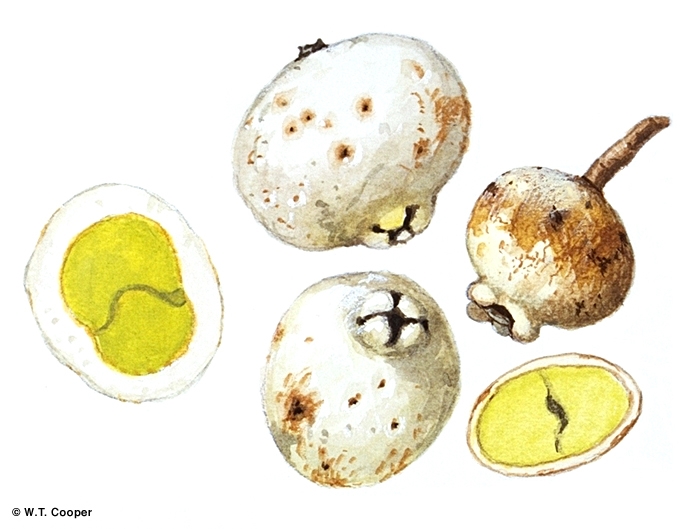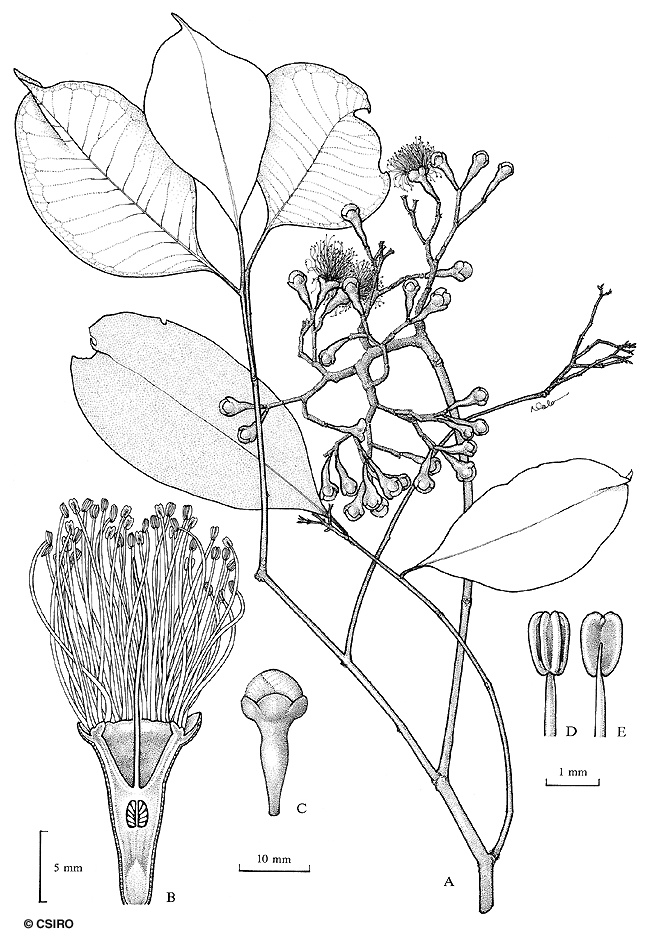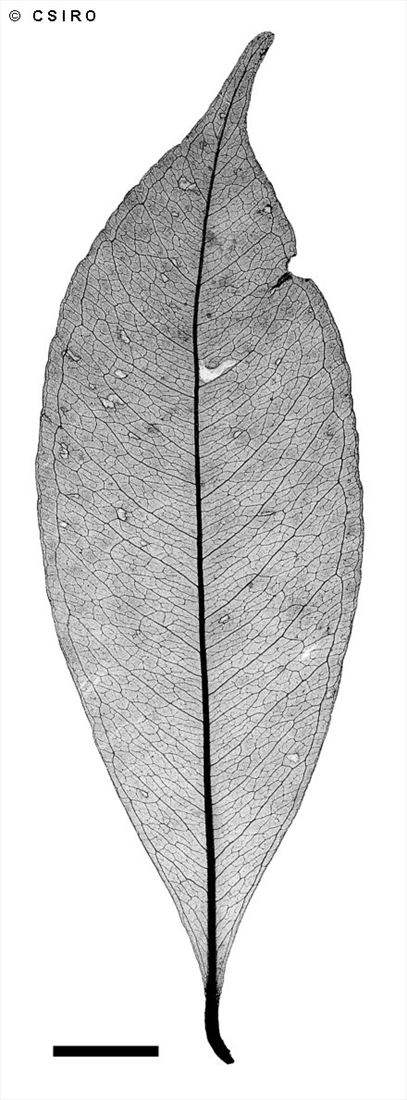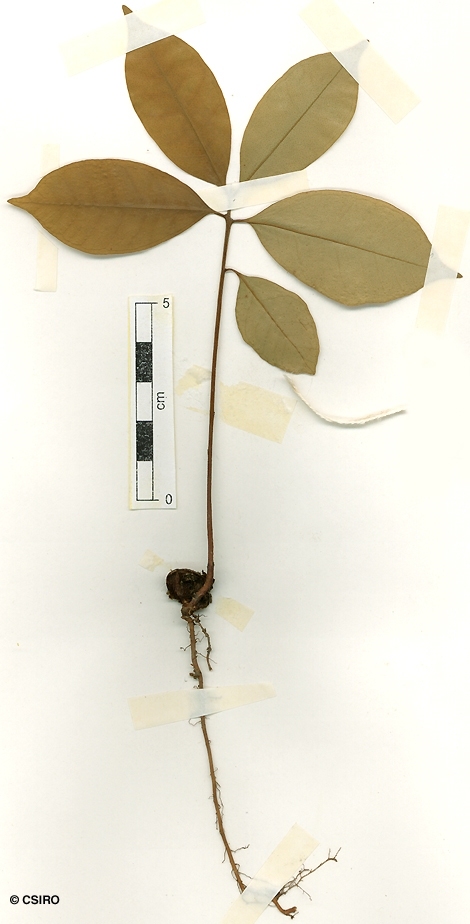Australian Tropical Rainforest Plants - Online edition
Syzygium sayeri (F.Muell.) B.Hyland







Hyland, B.P.M. (1983) Australian Journal of Botany Supplementary Series 9: 119.
Watergum; Satinash, Pink; Pink Satinash
Usually a large well formed tree with a flaky bark.
Oil dots very large and conspicuous, visible to the naked eye from a distance of one metre or more. Leaf blades about 7.3-16.2 x 2.5-7.4 cm. Two intramarginal veins normally visible.
Inflorescence terminal on special lateral branches, generally produced inside the crown of the tree, below or back from the leaves, bracts deciduous, absent at anthesis. Calyx tube (hypanthium) + pedicel about 9-16 mm long, calyx tube (hypanthium) about 5-9 mm diam., calyx lobes rounded, dimorphic, concave, inner lobes larger, about 3-5 mm long. Petals shortly clawed, +/- orbicular, about 6-8 mm diam., oil dots conspicuous, more than 100 per petal, distributed over most of the surface except the margin. Outer staminal filaments about 12-22 mm long, anthers about 1 x 1 mm, gland on the back of the anther below the apex. Ovules about 12-24 per locule, placentas central, ovules radiating, ascending, disk conspicuously raised above the staminal ring. Style about 10-19 mm long, substantially shorter than the stamens.
Fruits globular or depressed globular, attaining about 30-40 mm diam., calyx lobes persistent, about 3-4 mm long, pericarp succulent. Seed solitary, about 10-20 mm diam., testa adhering slightly to the pericarp and also to the rugose surface of the cotyledons, cotyledons +/- uniformly textured except for scattered large oil glands just under the surface. Radicle central.
Occurs in NEQ, widespread throughout the area. Altitudinal range from sea level to 800 m. Grows in well developed rain forest on a variety of sites. It is frequently found along creeks and watercourses but is not restricted to that habitat. Also occurs in New Guinea.
This species produces millable logs and the timber is marketed as Pink Satinash, a useful general purpose structural timber. Wood specific gravity 0.78. The fruits are edible but not particularly palatable and of no commercial interest. Hyland (1983).





